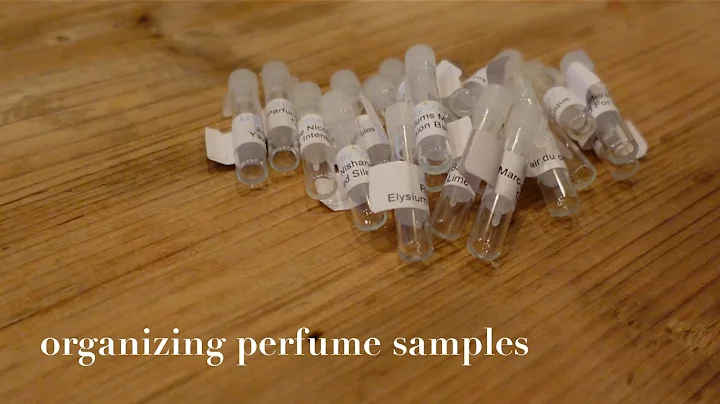An Expert Guide to Installing a Crawl Space Vapor Barrier
Table of Contents:
- Introduction
- Preparing for the Project
2.1 Measuring and Mapping the Crawl Space
2.2 Clearing the Cobwebs and Debris
2.3 Insulating the Vents
2.4 Cutting and Labeling the Vapor Barrier
- Wrapping the Piers
3.1 Measuring and Cutting the Vapor Barrier
3.2 Wrapping the Piers like a Christmas Present
- Attaching the Vapor Barrier to the Walls
4.1 Applying Duct Tape for Placement
4.2 Using Zip System Flashing Tape for Adhesion
- Finishing Touches and Final Steps
5.1 Completing the Rest of the Crawlspace
5.2 Securing with Vapor Barrier Stakes
5.3 Inspecting and Sealing Seams
- Conclusion
🚀 Raking Out Sharp Objects and Laying a Moisture Barrier Underneath the House 🏠
Introduction:
Maintaining a clean and dry crawl space is essential for the overall health and stability of any house. In this guide, we will walk you through the step-by-step process of how to clean up and prepare the crawl space for the installation of a moisture barrier. By following these instructions and using the right materials, you can create a protective barrier that will help prevent moisture damage, mold, and pest problems. So, grab your tools and let's get started!
Preparing for the Project:
2.1 Measuring and Mapping the Crawl Space
Before diving into the project, it's crucial to have an accurate map of your crawl space. Measure the dimensions of the entire area and draw a detailed diagram. This will help you determine the amount of vapor barrier you need to order.
2.2 Clearing the Cobwebs and Debris
Start by removing any cobwebs and large debris from the crawl space. Use a cobweb broom to thoroughly sweep the area, ensuring a clean surface for the vapor barrier.
2.3 Insulating the Vents
To prevent excess humidity, insulate the crawl space vents. Fill each vent hole with exterior insulation and seal them with zip system flashing tape. This will create an airtight seal to eliminate airflow.
2.4 Cutting and Labeling the Vapor Barrier
To make installation easier, cut the vapor barrier to the correct dimensions outside the crawl space. Divide the crawl space into sections (A, B, and C), and label each piece accordingly using swatches of painter's tape. This will save time and ensure a smooth installation process.
Wrapping the Piers:
3.1 Measuring and Cutting the Vapor Barrier
Measure the length of each pier and cut the vapor barrier to the proper width. Aim for a six-inch overlap for a good vapor barrier, but consider going up to two feet for added protection. Take care to leave some extra material for wrapping around the piers.
3.2 Wrapping the Piers like a Christmas Present
Wrap each pier with the vapor barrier, starting from the bottom and working your way up. Cut off any excess material and use small pieces of duct tape to secure the wrap in place. Ensure a snug and tight fit, resembling a neatly wrapped present.
Attaching the Vapor Barrier to the Walls:
4.1 Applying Duct Tape for Placement
Attach duct tape to the walls to mark the placement of the vapor barrier. This will serve as a guide for positioning the barrier correctly.
4.2 Using Zip System Flashing Tape for Adhesion
Apply zip system flashing tape along the marked lines on the walls. This tape securely adheres to concrete surfaces. Press the vapor barrier onto the tape, ensuring a tight bond.
Finishing Touches and Final Steps:
5.1 Completing the Rest of the Crawlspace
Following the same process as before, continue cutting and installing the vapor barrier for the remaining sections of the crawl space. Roll out the barrier, ensuring a proper overlap and snug fit. Trim any excess material and tape the seams securely.
5.2 Securing with Vapor Barrier Stakes
To prevent accidental damage, secure the vapor barrier to the ground with vapor barrier stakes. This will keep the barrier in place and prevent it from getting ripped or torn.
5.3 Inspecting and Sealing Seams
Inspect the entire crawl space for any gaps or seams in the vapor barrier. Use vapor barrier seam tape to seal any openings and ensure a complete and effective barrier.
Conclusion:
By following these steps, you have successfully cleaned and prepared your crawl space for the installation of a moisture barrier. This barrier will protect your home from excess moisture, mold, and pests, ensuring a healthy and secure living environment. Regularly inspect and maintain the vapor barrier to ensure its effectiveness for years to come. Congratulations on a job well done!
Highlights:
- Learn how to properly clean and prepare your crawl space
- Understand the importance of a moisture barrier for a healthy home
- Step-by-step instructions for measuring, cutting, and installing a vapor barrier
- Tips on insulating vents and sealing seams for optimal protection
- Ensure a clean and dry crawl space to prevent mold, pests, and structural damage
FAQ:
Q: How long does it take to install a crawl space moisture barrier?
A: The installation time varies depending on the size of the crawl space and the complexity of the project. However, with proper planning and preparation, it can typically be completed within a day or two.
Q: What thickness of vapor barrier should I use?
A: It is recommended to use a 10 mil vapor barrier for optimal protection. This thickness offers durability and longevity, ensuring a reliable barrier against moisture.
Q: Can I install a crawl space moisture barrier myself?
A: Yes, installing a crawl space moisture barrier is a DIY-friendly project. However, it requires careful planning, precise measurements, and attention to detail. Following the provided instructions and using the right materials will help you achieve a successful installation.
Resources:







